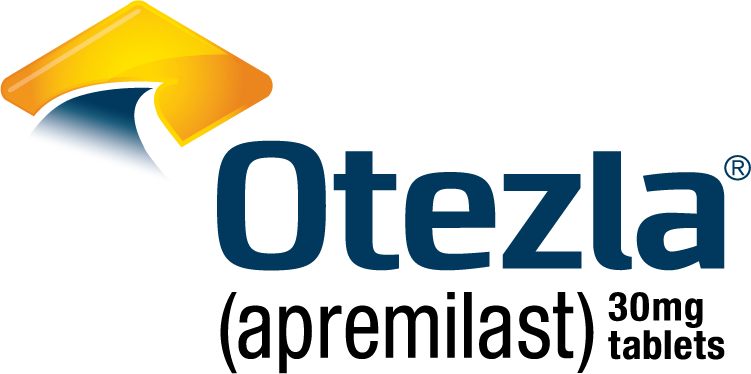HS patients with skin of color more likely to receive surgery than white patients
Source: Healio
Hidradenitis suppurativa patients with skin of color are more likely to have surgical intervention than white patients, according to a poster presented at the Skin of Color Update virtual meeting.
This difference in treatment strategy may be due to delayed diagnosis and worse scarring.
“Hidradenitis suppurativa (HS) is a chronic disease that causes inflammatory lesions typically found in the axillary, inguinal and perineal regions that can result in permanent scarring, fibrosis and sinus tract formation,” India S. Robinson, BA, of the department of dermatology and dermatologic surgery at the Medical University of South Carolina, and colleagues wrote. “Although HS is more prevalent in patients with skin of color, research in HS has historically been performed in European and white populations.”
Researchers conducted a cross-sectional retrospective study of HS-associated visits and procedures at one South Carolina site and performed descriptive statistics and chi-square analyses.
Source: Dermatology Times
Hilary Baldwin, MD, presented on how to recognize, diagnose, and treat rosacea in patients with skin of color at the Skin of Color Update 2021.
In a presentation at the Skin of Color Update 2021, held virtually September 10-12, Hilary Baldwin, MD, dermatologist, medical director at the Acne Treatment and Research Center in Brooklyn, New York, and assistant professor at Rutgers Robert Wood Johnson Center in New Brunswick, New Jersey, explained the need to recognize, diagnose, and treat rosacea in patients with skin of color (SOC).1
It was found in a survey that 2% of patients diagnosed with rosacea identify as Black, 2.3% as Pacific Islander, 3.9% as Hispanic or Latino, according to research that Baldwin quoted2. She quoted the paper which said, “Patients of color rarely receive a diagnosis of rosacea, even when they have symptoms suggesting it.”
When the patients were separated into two categories Fitzpatrick Phototype [FPT] I-III vs FPT IV-V, the percentages were 93.4% vs 6.6%, but when the categories are FPT I-IV vs FPT V-VI they are 99.8% vs 0.2%. Baldwin suggested this difference in diagnosis could be because erythema and telangiectasia are harder to identify in darker skin types.
Source: Dermatology Times
In this first part of our coverage of “The Skin of Color Update Pre-Conference Virtual Symposium” held August 3, we review challenging cases of melasma, vitiligo, and post-inflammatory hyperpigmentation in skin of color patients.
On August 3, the Skin of Color Update held their “Skin of Color Pre-Conference Virtual Symposium,” with challenging skin of color (SOC) cases that physicians have encountered in their practice. Moderators Andrew Alexis, MD, MPH, vice-chair for diversity and inclusion and assistant professor of dermatology at Weill Cornell Medicine in New York City, New York, and Eliot Battle, MD, CEO and co-founder of Cultura Dermatology & Plastic Surgery, Washington, D.C., opened the symposium with Battle leading the first hour of discussion.
Melasma
The first case was presented by Heather Woolery-Lloyd, MD, board certified dermatologist, director of the skin of color division in the Frost Department of Dermatology at the University of Miami Miller School of Medicine, Miami, Florida, on a long-term case of melasma.1 In 2013, Woolery-Lloyd met a 66-year-old patient with melasma and a history of stable lichen planopilaris and migraines.
Source: Healio
Traction alopecia can be reversed or reduced when clinicians are mindful of culturally sensitive practices and recommend low-risk hair styles, according to a poster presented at the Skin of Color Update virtual meeting.
“Traction alopecia (TA) is a debilitating hair loss condition that affects Black women and children with debilitating hairstyles,” Gabriella Santa Lucia, BS, of the department of dermatology and dermatology surgery at the Medical University of South Carolina, and colleagues wrote. “Hair styles with tight braids, dreadlocks, buns and/or ponytails are at highest risk of hair shaft breakage due to the traction forces creating sites of geometric weakness.”
Researchers completed a retrospective chart review of 164 patients (average age, 31.5 years; 98.2% female; 97.6% Black) with a diagnosis of TA or TA plus androgenetic alopecia (AGA), of which 72% reported a history of braids, weaves, cornrows, dreadlocks, extensions, perms, ponytails, wigs and/or thermal and chemical relaxants.
Source: Healio
Facial hyperpigmentation was improved in patients with skin of color who used a cosmetic topical brightener combined with a dual serum antioxidant system, according to a poster presented at the Skin of Color Update virtual meeting.
“Hyperpigmentation disorders disproportionately affect individuals with skin of color,” Seemal R. Desai, MD, of the department of dermatology at the University of Texas Southwestern Medical Center, and colleagues wrote.
“Comprehensive treatment regimens are needed to adequately address hyperpigmentation in skin of color.”
An open-label, single center study included 13 patients (mean age, 44; 92% female), of which 10 completed the study.
All participants were Asian, Hispanic or African American and they each had investigator-assessed moderate to severe overall facial hyperpigmentation.
Each patient received a treatment regimen that included a dual serum antioxidant system (LVS), a cosmetic topical brightener (LYT2), a facial cleanser, a broad-spectrum SPF 35 sunscreen and an ultra-sheer moisturizer, all to be used twice daily.
Source: Healio
Use of a double-conjugated retinoid eye cream showed improvement in periorbital lines and wrinkles, according to a poster presented at the Skin of Color Update virtual meeting.
“The periorbital region is one of the first areas to show signs of age-related changes. Individuals notice and seek treatment for periorbital rejuvenation sooner than other facial zones due to epidermal and dermal changes to periorbital skin,” Joely Kaufman, MD, and colleagues wrote.
“Topical retinoids are a mainstay treatment for photoaged skin. However, use is often avoided around the eye owing to concerns of skin irritation.”
This dual-center, open-label study evaluated the nightly use of a new double-conjugated retinoid/alpha hydroxy acid molecule (AHARet-EM), which is designed to be used around the eye.
Source: Healio
Long-term use of a combination halobetasol propionate and tazarotene lotion cleared psoriasis in patients with skin of color as well as white patients, according to a poster presentation at the Skin of Color Update virtual meeting.
“Non-white patients may be more severely affected by psoriasis than white patients, underscoring the need to examine topical therapies for psoriasis in this population,” Neal Bhatia, MD, and colleagues wrote. “The fixed-dose corticosteroid/retinoid combination halobetasol propionate (0.01%) and tazarotene (0.045%) lotion (HP/TAZ) is approved for topical treatment of plaque psoriasis in adults.”
The multicenter, phase 3, open-label, long-term study included 77 non-white patients and 473 white patients aged 18 years or older with psoriasis. Subjects had an Investigator Global Assessment score of 3 or 4 and body surface area (BSA) involvement between 3% and 12%.
Source: MDedge Dermatology
Addressing current standards of beauty at the Skin of Color Update 2021, dermatologists speaking about attitudes within four ethnic groups recounted a similar story: .
This change is relevant to dermatologists consulting with patients for cosmetic procedures. Four dermatologists who recounted the types of procedures their patients are requesting each reported that more patients are seeking cosmetic enhancements that accentuate rather than modify ethnic features.
Lips in Black, Asian, and Arab ethnic groups are just one example.
Source: Dermatology Times
Jill Waibel, MD, discusses her recommendations on how to treat keloids and scaring using lasers in her presentation at the Skin of Color Update 2021.
Jill Waibel, MD, presented at the Skin of Color Update, held virtual September 10-12 on lasers and their uses for both scar and keloid treatment.1 Waibel is medical director and owner, Miami Dermatology and Laser Institute, subsection chief of dermatology, Baptist Hospital, medical director, Multidisciplinary Skin Cancer Clinic, Miami Cancer Institute, all in Miami Florida and Dermatology Times® editorial board member.
She explained that scar formation is affected by the level of wound trauma, personal genetics, and location of scar. Keloids tend to form in the same location multiple times due to tension; however, Waibel said that the issue could be deeper than what it seems.
Source: Dermatology Times
A cosmetic topical brightener serum combined with a dual antioxidant system show promise in treating moderate to severe hyperpigmentation in skin of color patients.
“Hyperpigmentation disorders disproportionately affect individuals with skin of color,” wrote the authors. “These conditions are challenging to treat in patients with skin of color, and these disorders are often recalcitrant or relapsing and require continuous treatment.”
That poses an ongoing problem, they wrote. “The gold standard therapies containing hydroquinone (HQ) cannot be used for extended periods because of adverse effects [AEs],” they added. “Cosmetic topical therapies are in demand, but current options lack efficacy.”
In their view, “comprehensive treatment regimens are needed to adequately address hyperpigmentation.” The aim of their research was to evaluate the safety and efficacy of a comprehensive regimen that would include agents “that reduce melanogenesis or neutralize extrinsic stressors” when used together; a comprehensive HQ-free retinol-free cosmetic topical brightener (Lytera 2.0 (LYT2), SkinMedica) and a dual serum that provided antioxidant protection and skin repair support (Lumivive System (LVS), SkinMedica).
Source: Dermatology Times
Ginette A. Okoye, MD, FAAD, provides several clinical pearls to help physicians find the best therapy for their individual hidradenitis suppurativa patients in her presentation at the Skin of Color Update 2021.
Physicians should be asking themselves 3 questions to determine how to best treat their individual hidradenitis suppurativa (HS) patients, according to Ginette A. Okoye, MD, FAAD, professor and chair of the department of dermatology at Howard University College of Medicine, Washington, D.C., and co-chair of the scientific committee of the Skin of Color Society, who presented at the Skin of Color Update 2021, held virtually September 10-12.
Source: Dermatology Times
Hilary Baldwin, MD, presents on keloids in light skin patients, hypopigmentation after treatment, to stitch or not to stitch, and more.
In a presentation at the Skin of Color Update 2021, held virtually September 10-12, Hilary Baldwin, MD, dermatologist, medical director at the Acne Treatment and Research Center in Brooklyn, New York, and assistant professor at Rutgers Robert Wood Johnson Center in New Brunswick, New Jersey, explained that as keloids pharmacogenetics are not well known, it can cause keloids to not respond to corticosteroid (CS) treatment.1 Other reasons for this can be attributed to poor technique, insufficient dosing/concentration, and reduced genetic sensitivity to glucocorticoids (GC).
She quoted a study in which 19 patients were evaluated, 12 of the patients had CS responses in the past and 7 patients did not. The study found that GC receptors were less sensitive in those who did not respond in treatment and continued to be downregulated as time moved on. They also found at week 4 that melanin decreased in patients, and it might be related to treatment success. Baldwin summed up the results by stating that if a patient is not responding, then it is time to try another treatment.
Source: Dermatology Times
At the 2021 Skin of Color Update, Andrew Alexis, MD, MPH, presented on the subtle distinctions in treating skin of color patients with acne.
Andrew Alexis, MD, MPH, vice chair for diversity and inclusion, department of dermatology, Weill Cornell Medicine, New York, New York, and Dermatology Times® board member, highlighted the key considerations when treating acne in patients with skin of color (SOC) specifically those with darker Fitzpatrick skin types, while also discussing the current strategies to treat them.1
Alexis began with explaining how post inflammatory hyperpigmentation (PIH) is one of the most prominent issues in SOC patients with acne and sometimes may be the symptom that patients are most bothered by.









